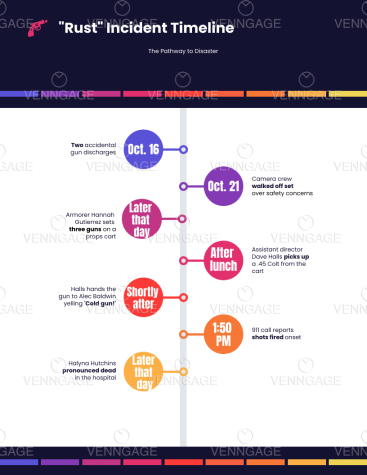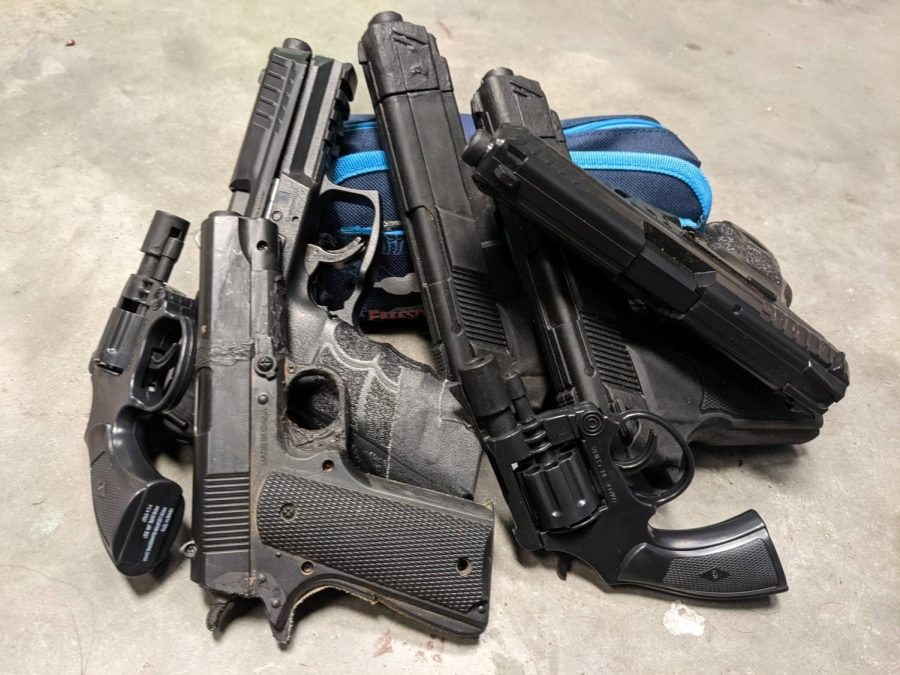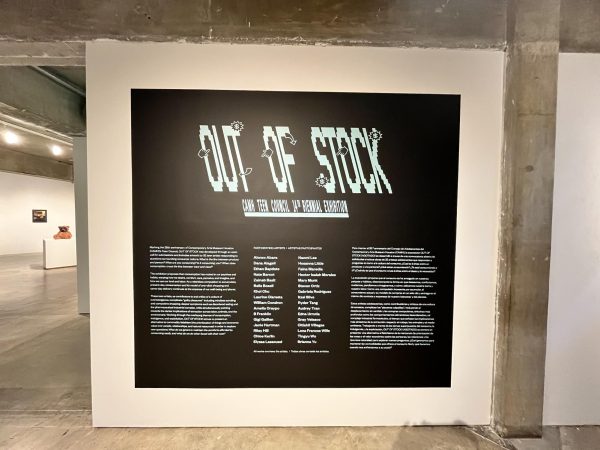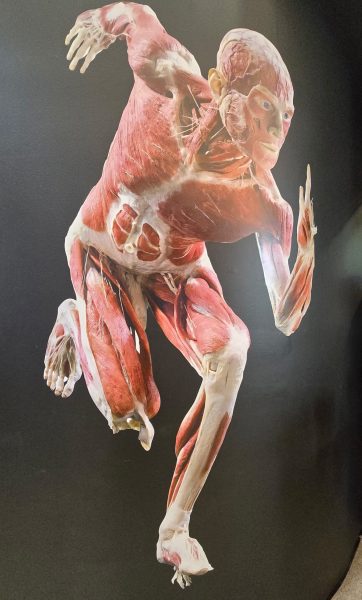The “Rust” Incident: Lessons for Carnegie Theatre
Prop guns used in Mr. Burns, A Post-Electric Play.
“There are fourteen guns on this stage,” I announced. “Twelve cap guns and two rubber guns. None of them should ever be with anyone except the actor they are assigned to, or me or Nicki.”
My props co-master and I exchanged looks. We just had to trust that all seventy-plus members of Carnegie Theatre’s latest show, Mr. Burns, would adhere to that rule and nothing would go wrong. But only days before, something had gone wrong on a professional set.
On Thursday, October 21st, according to the affidavit that was filed in the Alec Baldwin “Rust” incident, armorer Hannah Gutierrez-Reed set three guns on a cart. Assistant director Dave Halls grabbed one of those guns and handed it to actor Alec Baldwin for rehearsal during a scene, declaring it a “cold gun.” (‘Cold gun’ is a term used to describe a gun that is not loaded with a real bullet.) The gun was discharged, killing cinematographer Halayna Hutchins and hitting director Joel Souza. A tragedy.
However, if you ask nearly anyone who has worked on amateur or professional sets, they will tell you that tragedy should have been prevented. The cascade of errors that resulted in Thursday’s fatal shooting is every prop master’s worst nightmare.

Ironically, the safety briefing described at the beginning of the article is where problems began for the “Rust” crew. Complaints dating back to 2019 by Maggie Goll, an IATSE (International Alliance of Theatrical Stage Employees) Local 44 prop maker and licensed pyrotechnician, said that while working on Hulu’s “Into the Dark” Anthology Series, Halls neglected to hold safety meetings and consistently failed to announce the presence of a firearm on set to the crew in safety briefings.
Safety briefings are a key part of communication. Every crew member should be fully informed about what weapons are being used and who should be handling them. Without clear communication, weapons on set present even more risks, such as an unauthorized crew member handling a prop gun simply because they don’t know that they shouldn’t be handling that prop. Even audience members in a theatre are notified of any weapons used onstage with a trigger warning posted on the door.
Unfortunately, “Rust” had a myriad of other problems besides reports of an assistant director who didn’t handle weapons properly. Reports of harsh working conditions and long commutes to set only scratched the surface of things that went wrong on the set of “Rust.”
According to the Associated Press (AP), the bullet that is believed to have fatally struck Hutchins was a lead bullet removed from Souza’s shoulder. That in itself is the first error: a lead bullet (known in the industry as a ‘live round’) should never have been on any set in the first place.
In fact, in an interview with CNN discussing the incident, retired movie armorer John Patteson, known for his work on License to Kill and Super 8, among others, said that “to have [a live round] on a set is not acceptable at all.”
Having a live round on a Carnegie set would not just be unacceptable. It would be illegal. As a school, Carnegie is not permitted to have live firearms on its grounds, unless under certain circumstances (like when those firearms are carried by law enforcement officials).
But the “Rust” live round isn’t even believed to be an isolated mistake. The Santa Fe County Sheriff’s Department has reported that they have collected more than 500 blanks, dummy rounds, and rounds they suspect are live.
The second error–although had things gone differently, it wouldn’t have been an error–was the use of real weapons. The film industry does not have the theatre advantage of distance in order to use a non-functional weapon, like a toy or a starting pistol, but real guns should always be checked and double-checked.
On the “Rust” set, the chain of custody established that Halls should have checked the weapon before handing it to Baldwin. According to a warrant obtained by the Daily Beast, Halls did not check it before the fatal shooting.
In Carnegie shows, the most common type of prop gun used is a cap gun. Those are plastic facsimiles that are filed and painted to look like a real gun. They have never been capable of firing real bullets.
Another type of gun used on the Carnegie stage is a rubber gun. These are solid pieces of heavy rubber that can’t fire any projectiles at all–the greatest danger from one of those is the gun slipping from an actor’s hand and smashing someone in the nose.
The final type of gun used onstage in Carnegie is a starting pistol, using blanks. Those have a blocked barrel, and also cannot fire live ammunition.
Regardless of the type of gun used, the Carnegie safety protocols are the same as the ones that were supposed to be in place on the “Rust” set: the only people to touch a weapon are the actor who uses it, the props master/armorer, or the director. Every weapon is checked before it is handed off. The rest of the time, it is locked away.
That was the final error on the set of “Rust.” Because of COVID protocols, three guns were left unattended on a props cart. When Halls came to retrieve the gun that he thought was simply a prop, there was no one to stop him from taking the live gun, which had been reportedly left alone for hours prior to the fatal shot. A lack of supervision, along with a cascade of other problems, culminated in tragedy.
Carnegie Theatre, like thousands of other theatre and film companies across the country, takes care to prevent any incidents with the weapons they use in their shows. But as the “Rust” incident has reminded us, every system has flaws, and enough flaws in the system can result in disaster.
Your donation will support the student journalists of Carnegie Vanguard High School. Your contribution will allow us to cover our annual website hosting costs and fund field trips, competition fees, and equipment. We appreciate your support!

Hi! My name is Brooke J Ferrell. I'm a senior who, if not writing, is usually rock climbing :)












Nicki Birangi • Nov 9, 2021 at 2:02 pm
I really enjoyed the depth you went into here. It felt well informed.
Nadia Talanker • Nov 9, 2021 at 2:02 pm
I really liked this article, especially the balance between reporting on what happened and the opinion of the writer. The Rust incident was a tragedy, and reflecting on it is going to help to prevent similar situations from happening again.
Nice job [: